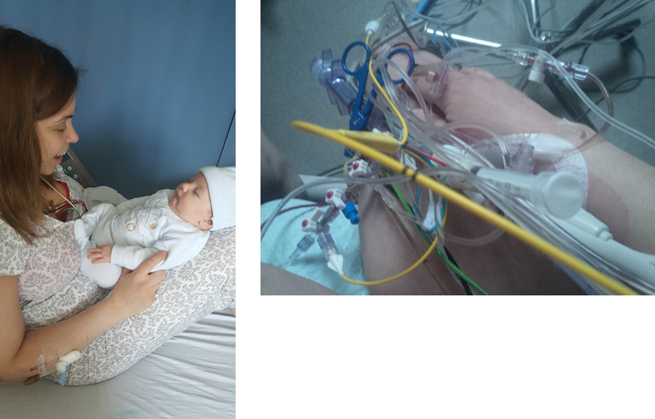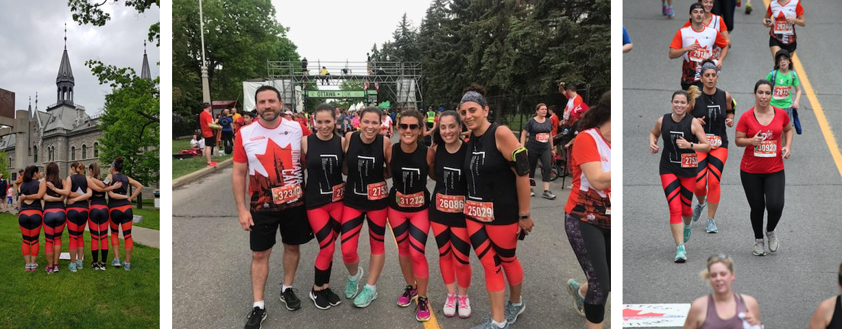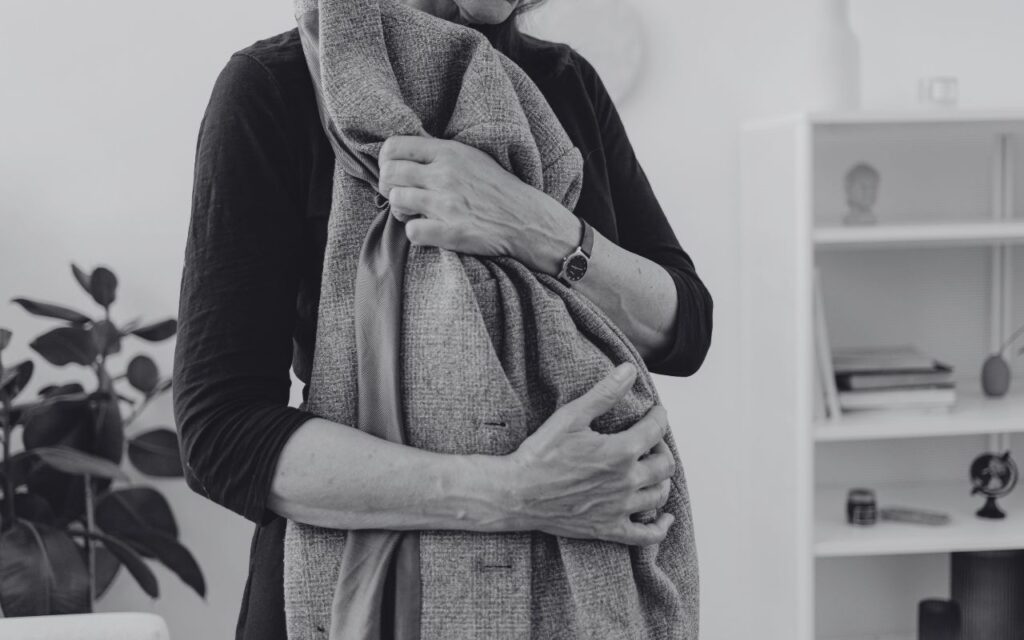
As September approaches, SCAD survivor Nadia shares her story, and challenges you to advocate for yourself and JUMP IN for women’s heart health with a commitment of just 30 minutes a day of physical activity for 30 days. Learn more and register: www.jumpinnow.ca.
For thirty-odd years, I lived a clichéd life. I graduated, got a job, had a big fat Italian wedding, bought a house, made it a home, travelled, and had two babies. I was ticking off boxes on the “How to Be an Adult” checklist.
Why stop at two when you can have three adorable chaos-makers? Enter Nicholas, the textbook definition of a good baby: cute, easy-going, and perfectly content with my new-mom routine of binge watching and lounging.
Fast-forward seven weeks, and I did what all new moms do: I dressed Nicholas in his finest clothes and took him to my office to show him off. What could go wrong?
Eight years ago, I found myself lying on a public washroom’s cold, dirty floor
At the welcome lunch, everyone was finally able to meet Nicholas. I also enjoyed some grown-up conversation. Suddenly, a wave of anxiety hit me like a freight train. With every passing second, I started to experience new symptoms like sweating, chest pains, dizziness, extreme fatigue, nausea, and an upset stomach.
Somehow, I made it to the bathroom. Violently ill, I found myself lying on the floor, insisting to everyone around me that I was “fine.” A woman uses the word fine to mean many things, but that day, I used the word as a cover to avoid discussion, to hide my true feelings, and as a social courtesy. I was not even close to fine.
A colleague, understanding that women have the habit of shrugging off difficult situations, convinced me that medical professionals should see me right away. I gave in when she invoked the power of Italian Catholic guilt, stating that should something happen to me on her watch, she would never get over it. With my permission, she immediately dialed 911.

Minutes felt like hours as I lay waiting with my head on a garbage can. Colleagues buzzed around me, trying to keep my baby happy. They tried to connect with my family and put a plan into motion. I ran through all the possible things that could have gone wrong with me, seeking answers. The only illness that I could come up with was that I had developed a severe case of mastitis.
Spoiler alert: It wasn’t mastitis
What followed was a blur. Paramedics arrived, triaged me, and ushered me, sirens blaring, to the University of Ottawa Heart Institute. I bypassed (pun intended) the normal ER routine, ending up in the catheterization laboratory, which I learned is a specialized hospital room where minimally invasive tests and procedures are performed to diagnose and treat cardiovascular conditions using imaging equipment to guide catheters through blood vessels to the heart.
After much speculation and deliberation, they said that it could be a SCAD: spontaneous coronary artery dissection. If you have never heard of it, don’t be surprised as I hadn’t either. I had to Google the term from my CCU-Bed 3. In my case, the risk factor identified was obvious: I was a seemingly healthy 37-year-old, seven weeks postpartum and breastfeeding, who was experiencing a Hollywood-style heart attack.
What is SCAD ?
SCAD is a rare emergency condition where a tear forms in a coronary artery, disrupting blood flow to the heart and could potentially cause a heart attack.
Prominent risk factors include multiple pregnancies, hormonal changes, and underlying connective tissue disorders.
This cardiac disease occurs most often in people aged 30 to 50 and affects women more often than men. People who develop SCAD often have no known risk factors for coronary artery disease.
Two heart catheterizations later, they confirmed my diagnosis. I had three tears in my coronary arteries, with one requiring three stents.
Learning to live with SCAD
Recovery wasn’t a sprint; it was a marathon. The first few weeks spent in the Critical Care Unit were a haze of tubes, monitors, and treatment. I was in heart failure. My heart was in total rebellion, and every step felt like climbing Everest. After a long fight, I finally went home to heal. Yet, as you can imagine, it was challenging to recover while at home with a newborn and two small children.

Physically, it took two years to regain some semblance of normalcy. Mentally, the journey was just as arduous. Spontaneous is a word in the medical term SCAD, and for an engineer who thrives on logic, that was a tough pill to swallow. Therapy helped, as did the unwavering support of my family and the incredible team at the Heart Institute.
Today and all this month, your gift in support of women’s heart health awareness, advocacy, and research will be matched by our sponsors!
Advocating for women to listen to their bodies
Today, I advocate for women’s heart health and share my story with anyone who will listen. Please take control of your health and know your risk factors. In the majority of cases of persons with heart disease, healthier habits do improve outcomes, and so does knowledge.
Today, I am finally able to keep up with my kids. I have resumed my favourite pastimes and look to the future. Each day is a gift, and I intend to make the most of it.

So, here’s the takeaway: If you ever find yourself or someone else in a similar situation, don’t downplay it. Listen to your body. Advocate for yourself. Remember, if you’re lying on a public washroom floor with crushing chest pain, it might just be your heart taking an unscheduled vacation.
Stay vigilant, stay healthy, and never underestimate the power of a good Italian guilt trip.
Plus, don’t forget to JUMP IN™ for women’s heart health this September.
Today, you can make a difference for yourself, and be a positive force in the lives of thousands of women across Canada, and around the world.
Get ready to JUMP IN™ for women’s heart health this September.
JUMP IN™ is a nation-wide physical activity challenge in support of women’s heart health. Get active for 30 minutes a day for 30 days this September.
Join a community of Canadians from coast to coast to coast that come together to support, inspire, teach and encourage each other.
This fun and friendly challenge is open to everyone of all ages and abilities. Join the movement today and fight the #1 cause of death among women.






